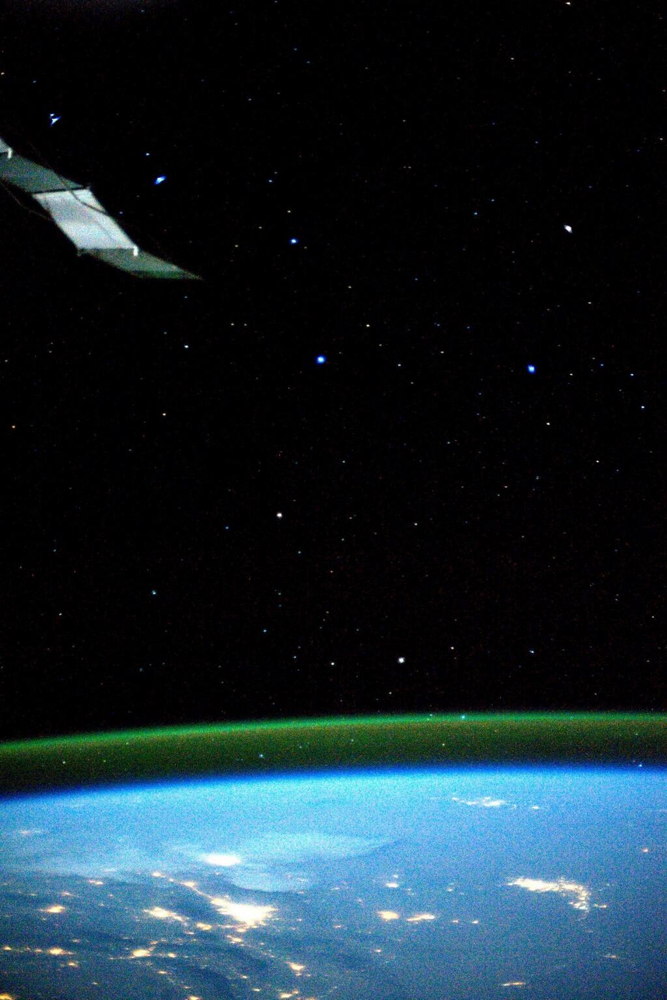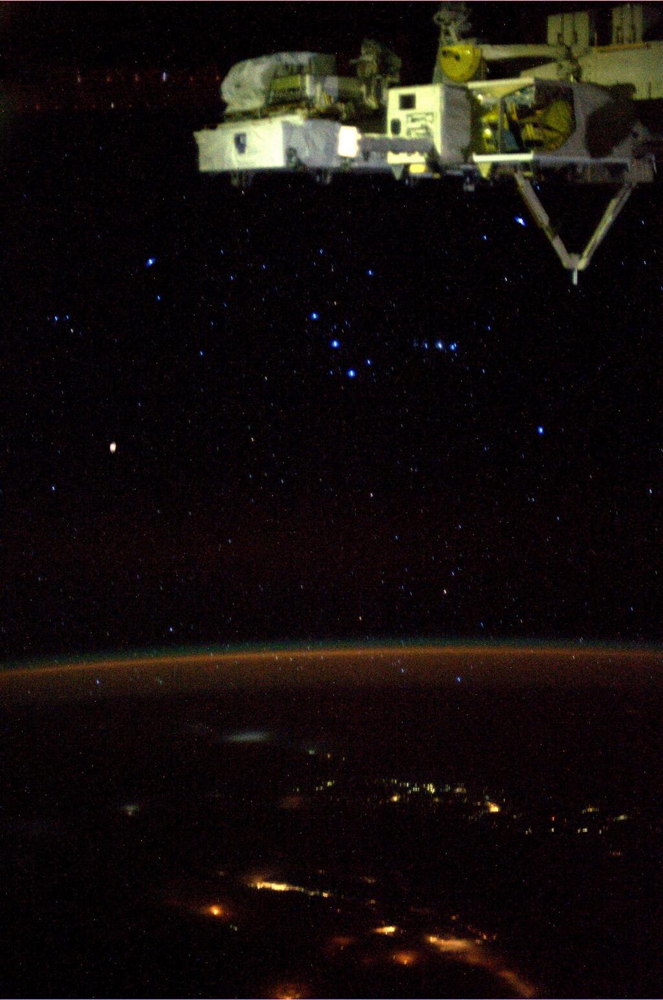Stargazing Astronaut Photographs Famed Constellations in Space (Images)

Constellations seen from Earth inspire wonder in many skywatchers, but what do they look like when viewed from space? One astronaut on the International Space Station beamed down her special cosmic views to Earth via social media.
NASA astronaut Karen Nyberg posted Twitter updates during her time aboard the orbiting outpost including a few special photos of familiar star patterns as seen from her perspective.
The Big Dipper, a common sight in Earth's northern skies, takes on a new majesty when seen from the International Space Station. Nyberg (@AstroKarenN) tweeted her sighting of the iconic grouping of stars on July 20. [See Amazing Space Photos by Astronaut Karen Nyberg]
The stars in the photo glow blue, red and yellow, as Earth stretches beneath with a green band of airglow above it. The green shimmer stems from a photochemical reaction that occurs high in the atmosphere. Cities shine with artificial light on the surface.
The seven stars of the Big Dipper comprise part of the constellation known as Ursa Major (the Greater Bear), which appears against a backdrop of dimmer stars in the image. The bright star Mizar appears at upper left, above a piece of the space station’s solar arrays.
Continuing to the lower right, stars Alioth and Megrez appear, then the two stars at the bottom of the "bowl," Phecda and Merak. At the right sits the "lip" of the dipper, Dubhe. The star that forms the end of the "handle," Alkaid, does not appear in this photo. The two stars at the outer edge of the "bowl," Merak and Dubhe, serve as pointers that direct an observer to Polaris, the North Star — an important direction-finding reference — which does not appear in this photo.
On Aug. 15, Nyberg managed to snap a photo of the constellation Orion, The Hunter, as seen from the station. Orion looks sideways from its usual orientation in the image. The hunter's belt — composed of three stars — appears in the center of the photo, with the stars that make up Orion's shoulders splayed out to the left and the feet to the right.
Breaking space news, the latest updates on rocket launches, skywatching events and more!
Nyberg also tweeted a photo of the Seven Sisters (also known as the Pleiades star cluster) on Aug. 25, 2013. While the open cluster of stars does not qualify as a constellation, it represents a common night sky sight for observers in both the Northern and Southern Hemispheres. The bright stars shine in the upper right portion of the image with the Indian Ocean bathed in moonlight below.
Nyberg has lived and worked aboard the International Space Station since May and now nears the end of her approximately five-month mission. She is set to fly back to Earth with European Space Agency astronaut Luca Parmitano and Russian cosmonaut Fyodor Yurchikhin on Sunday (Nov. 10).
Follow us @Spacedotcom, Facebook and Google+. Original article on SPACE.com.



